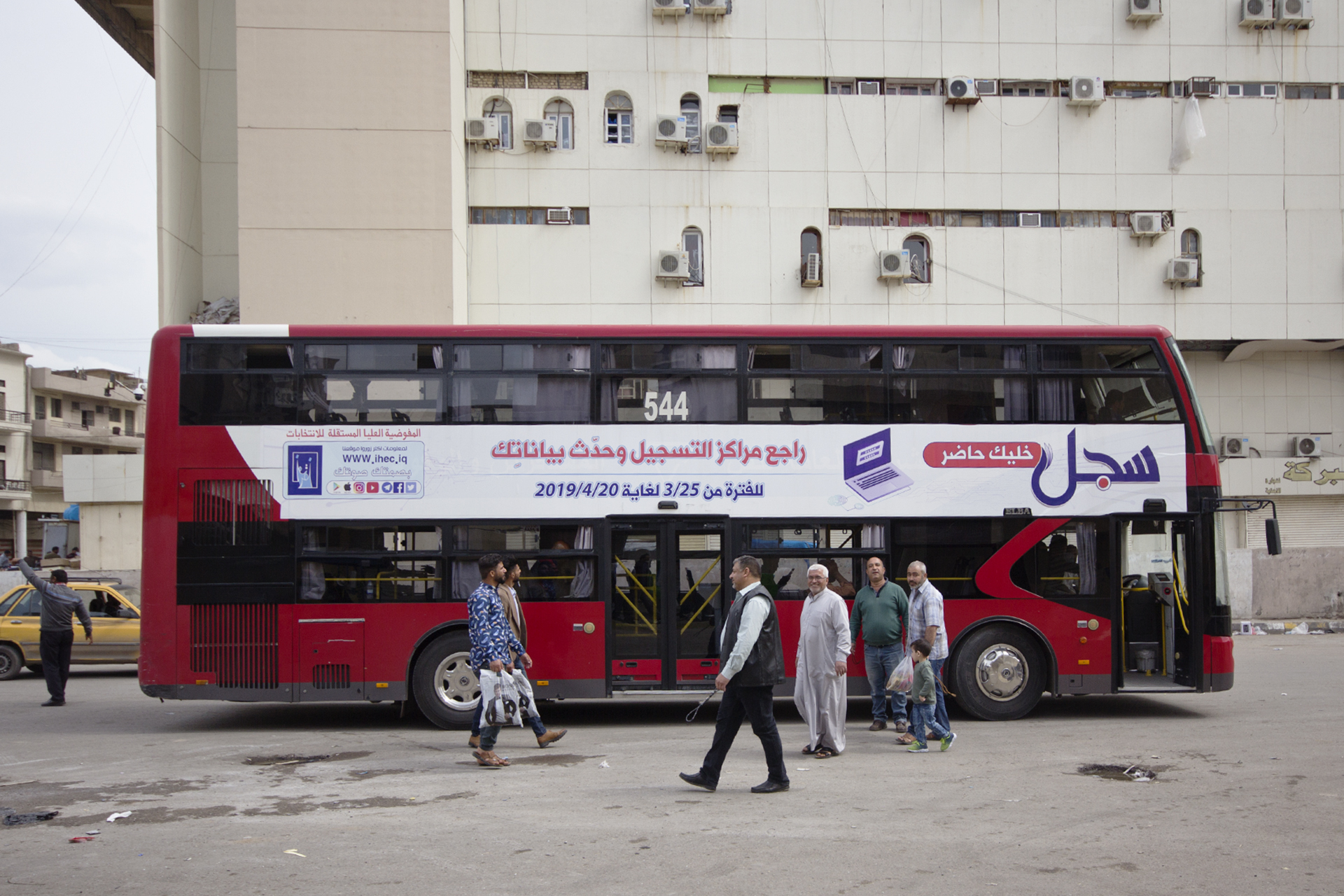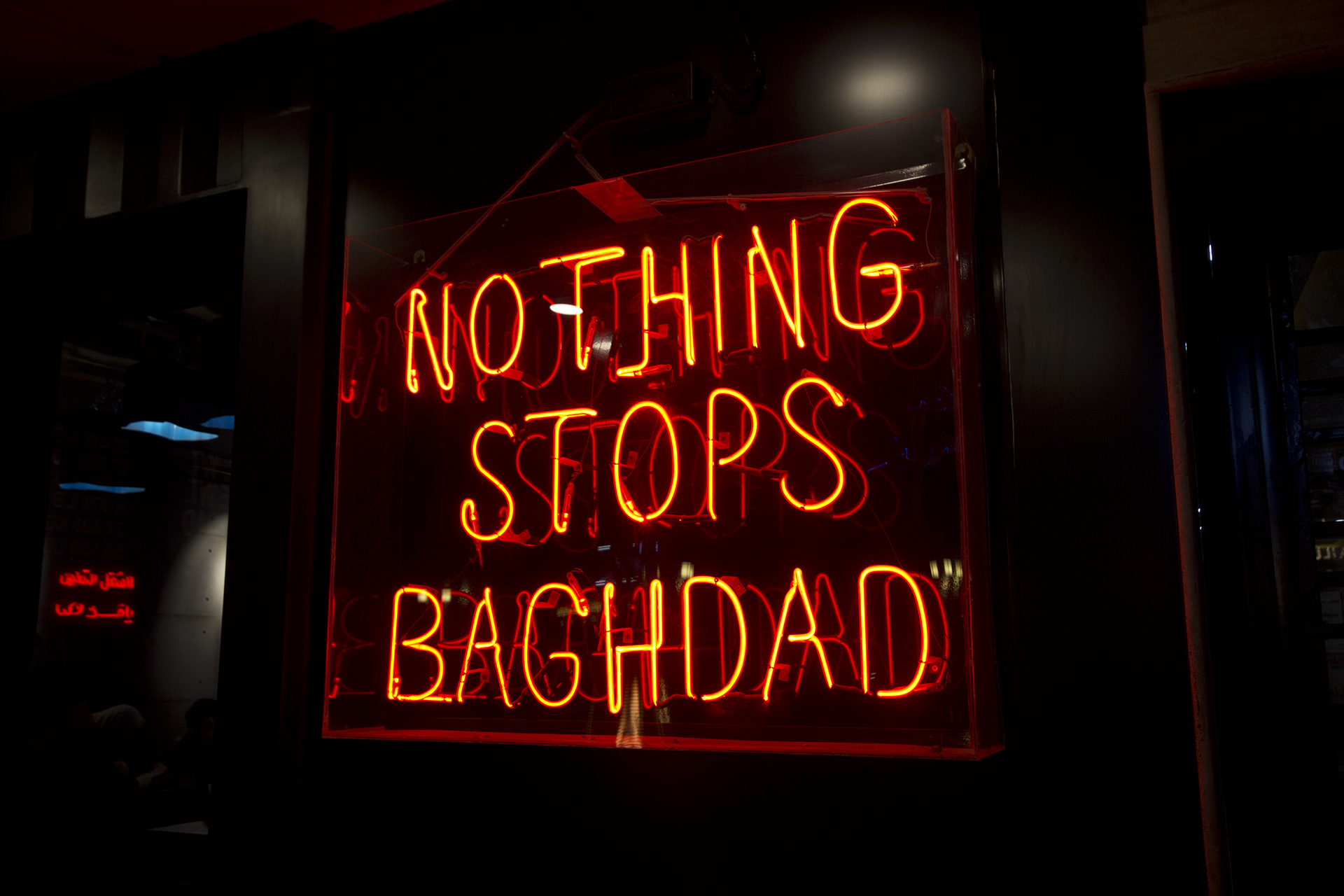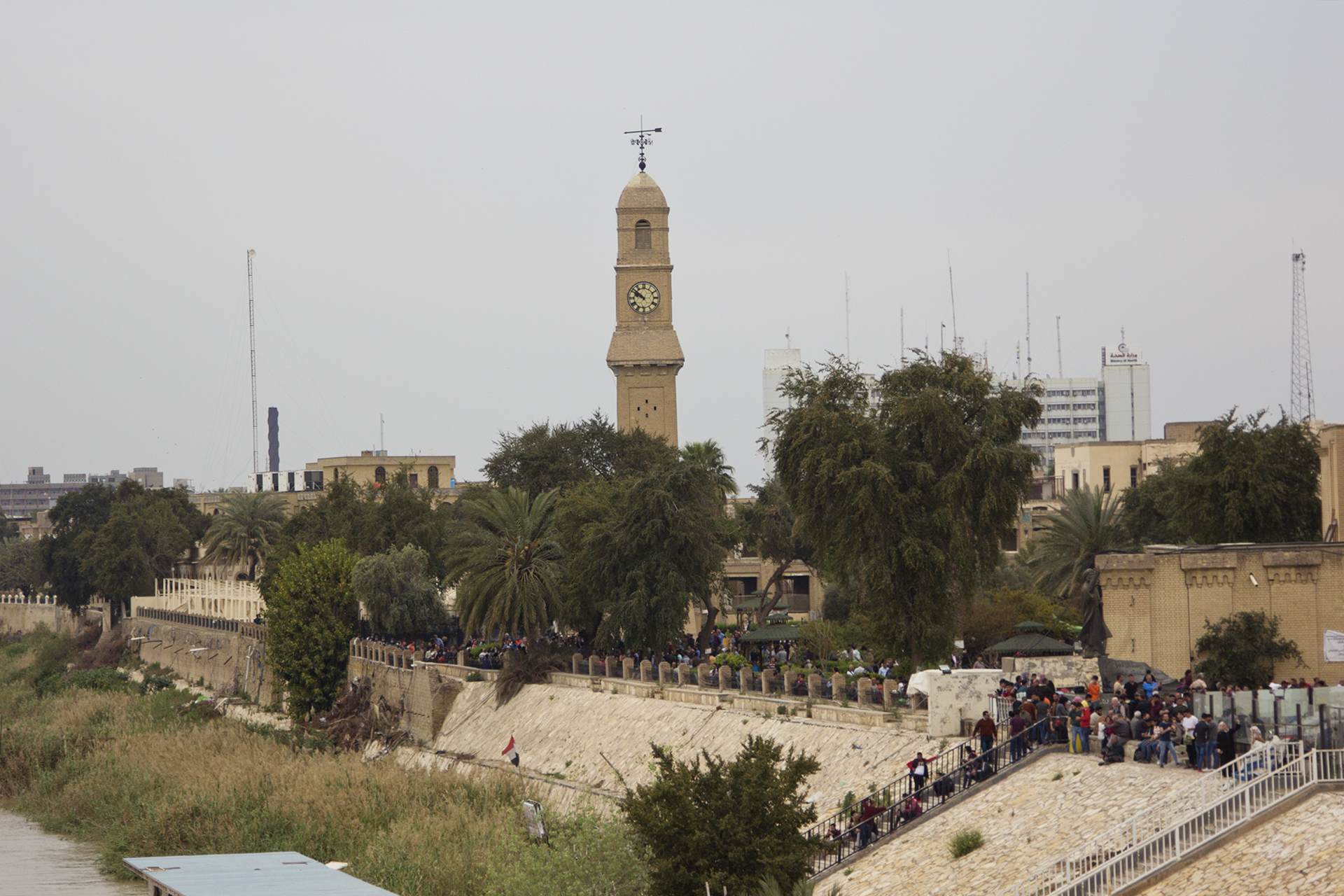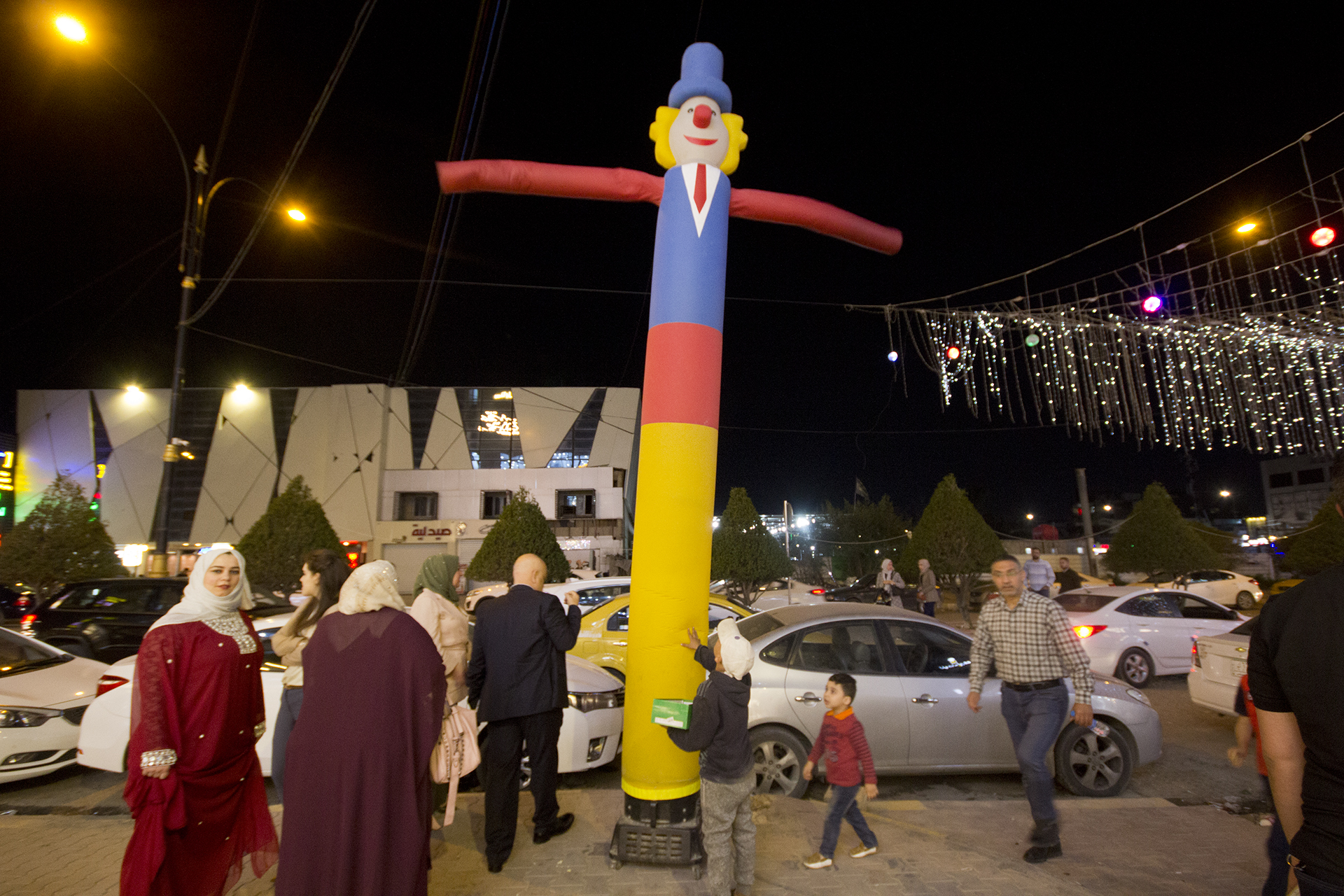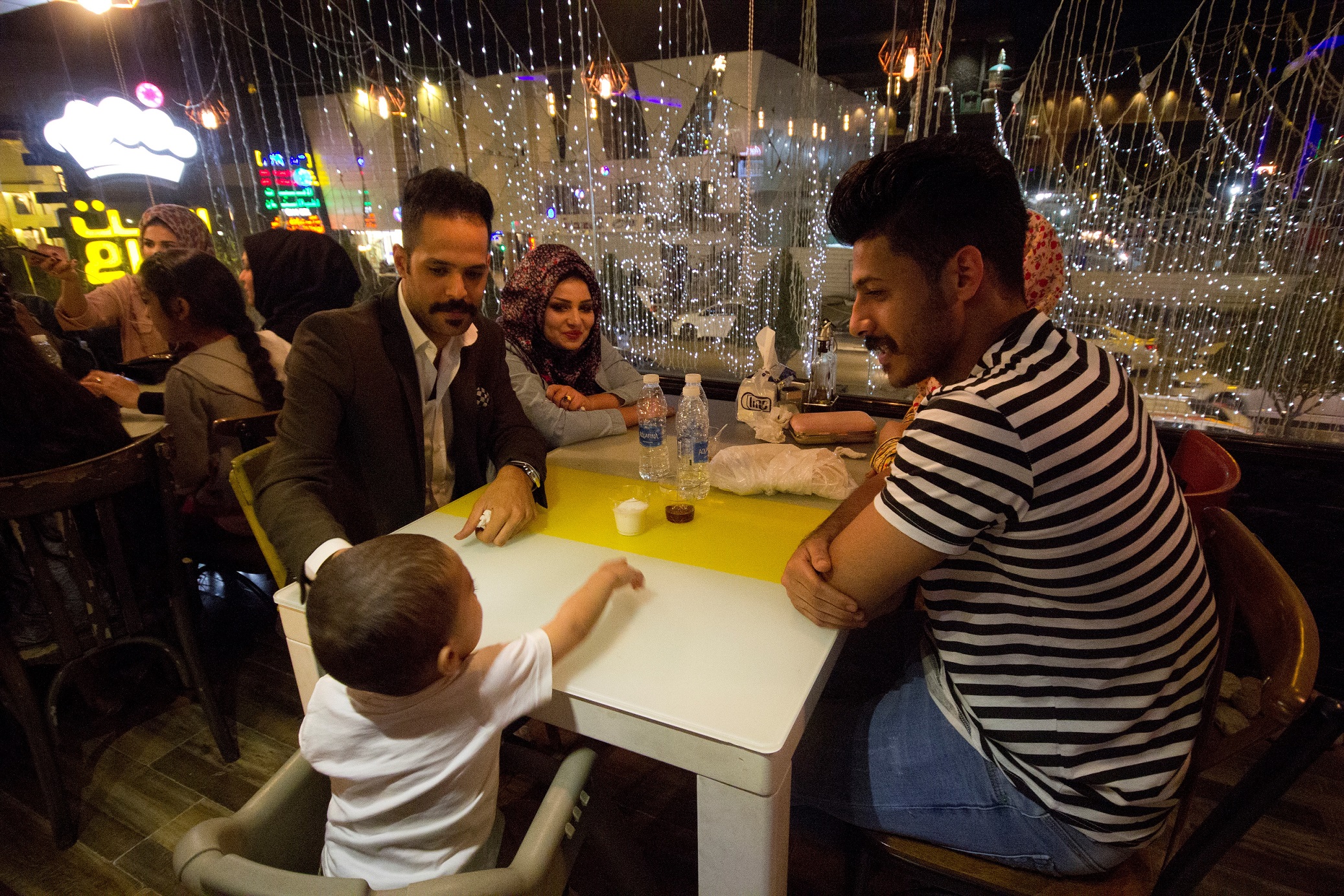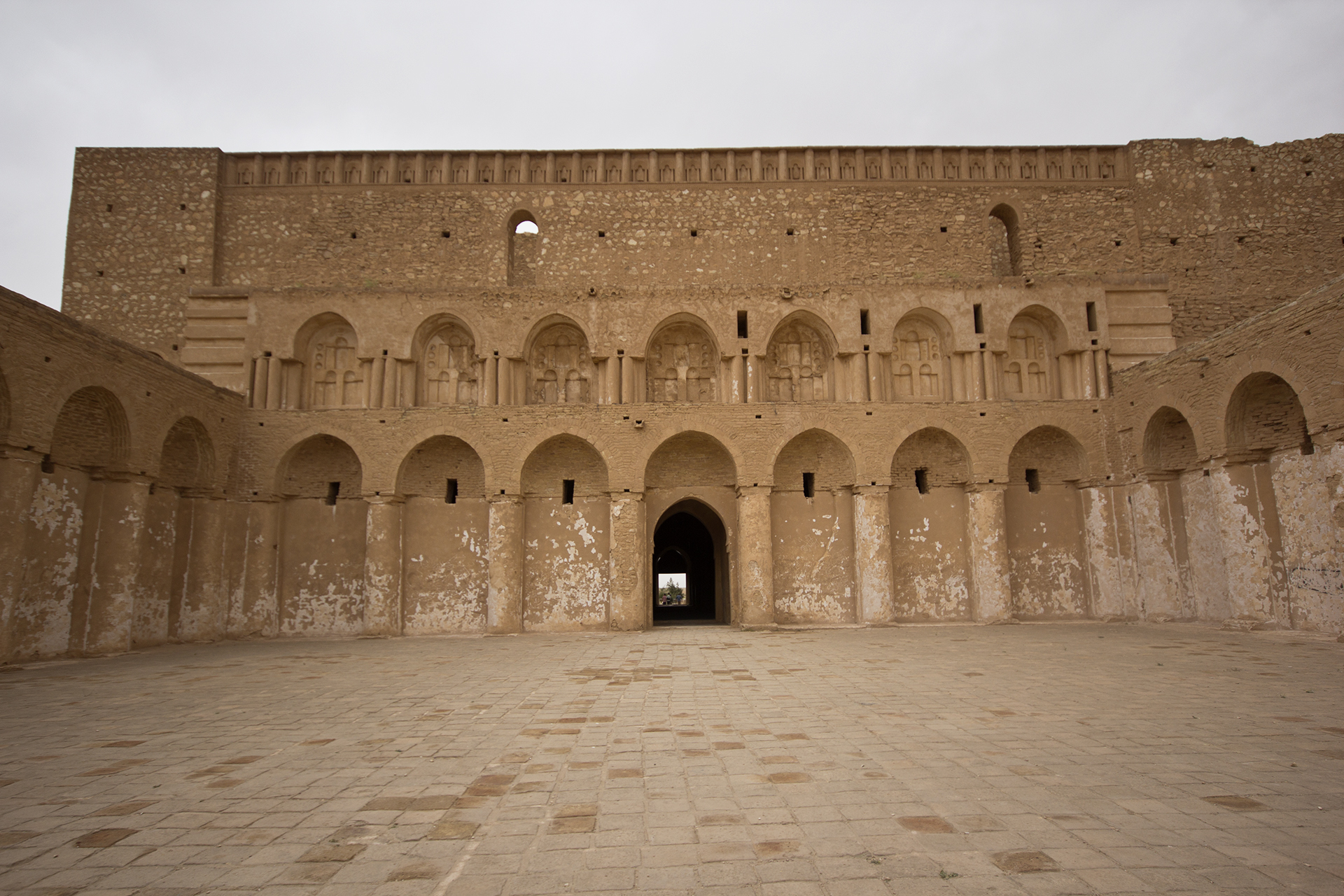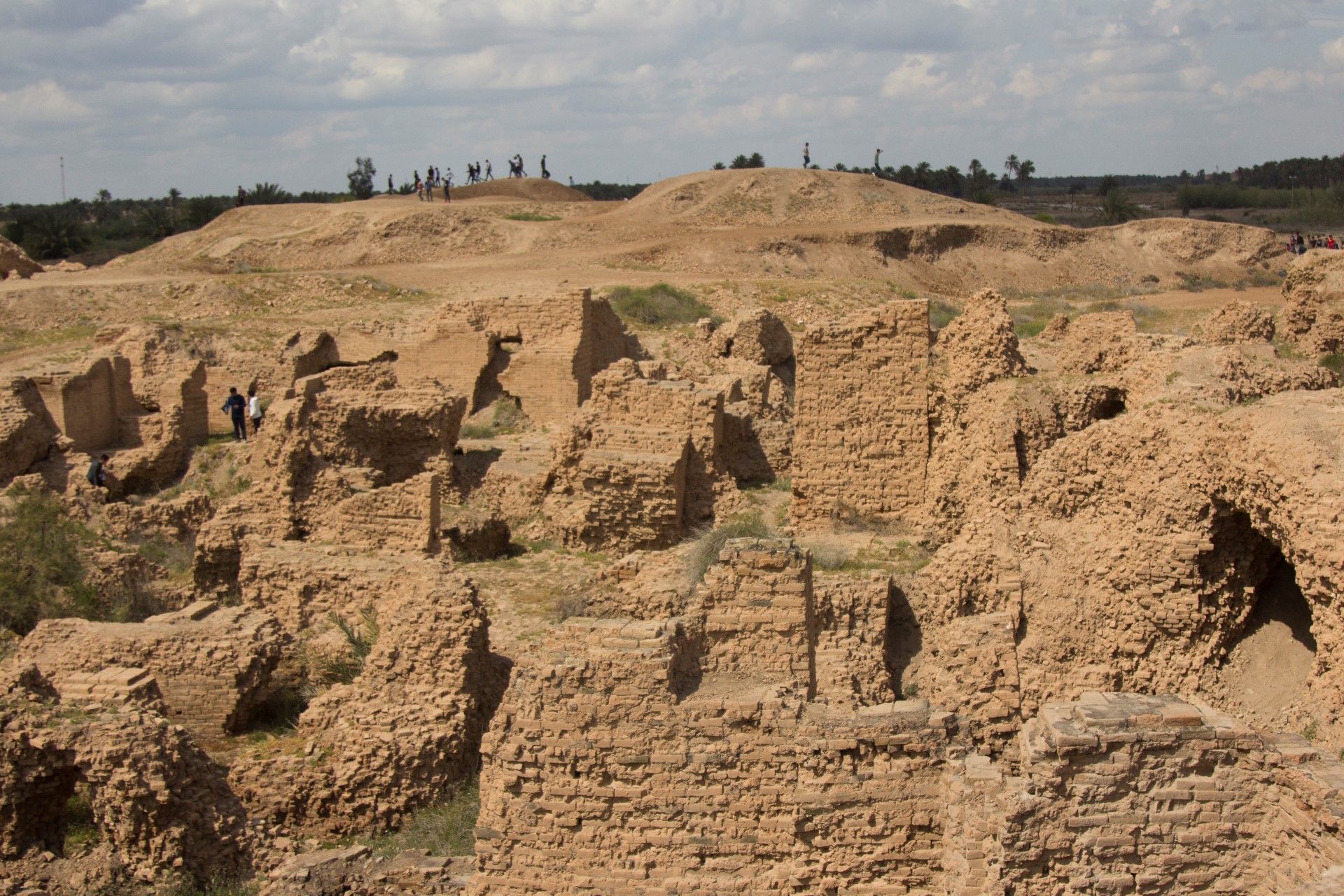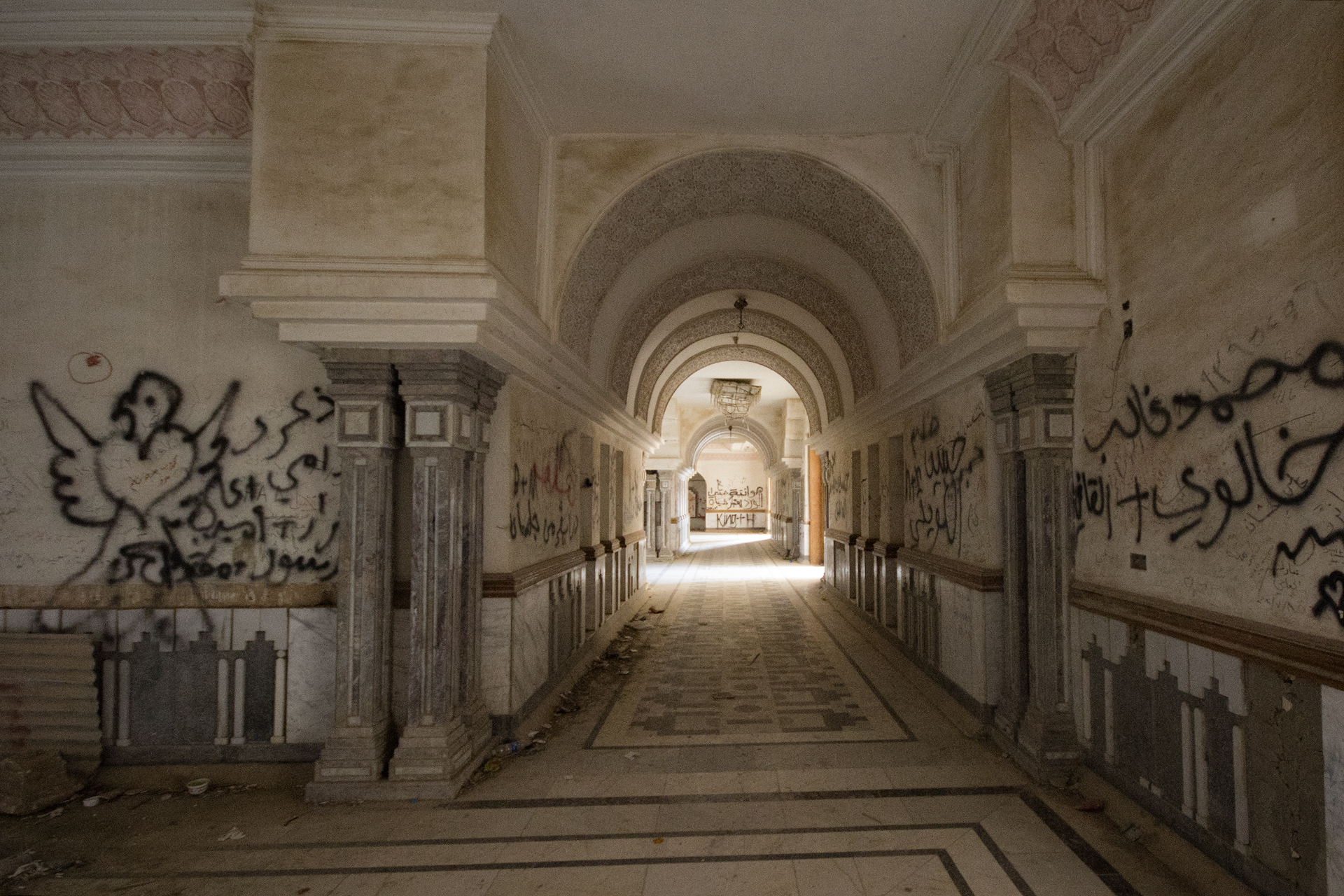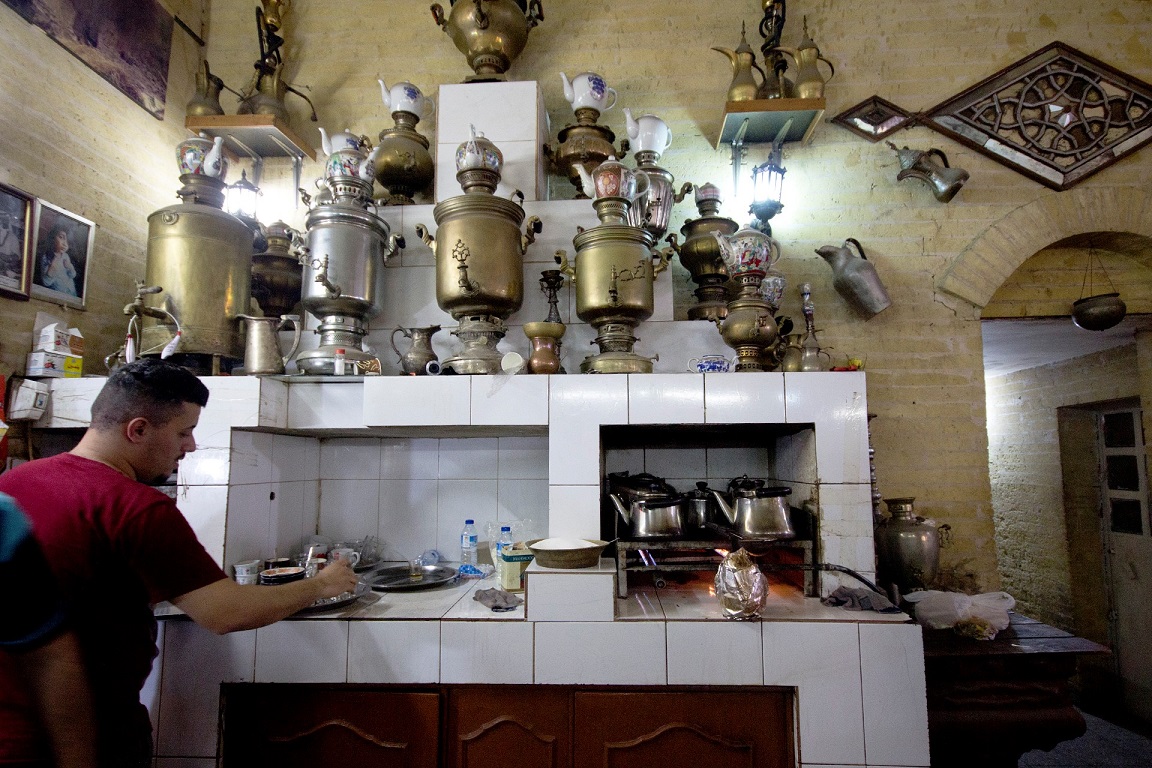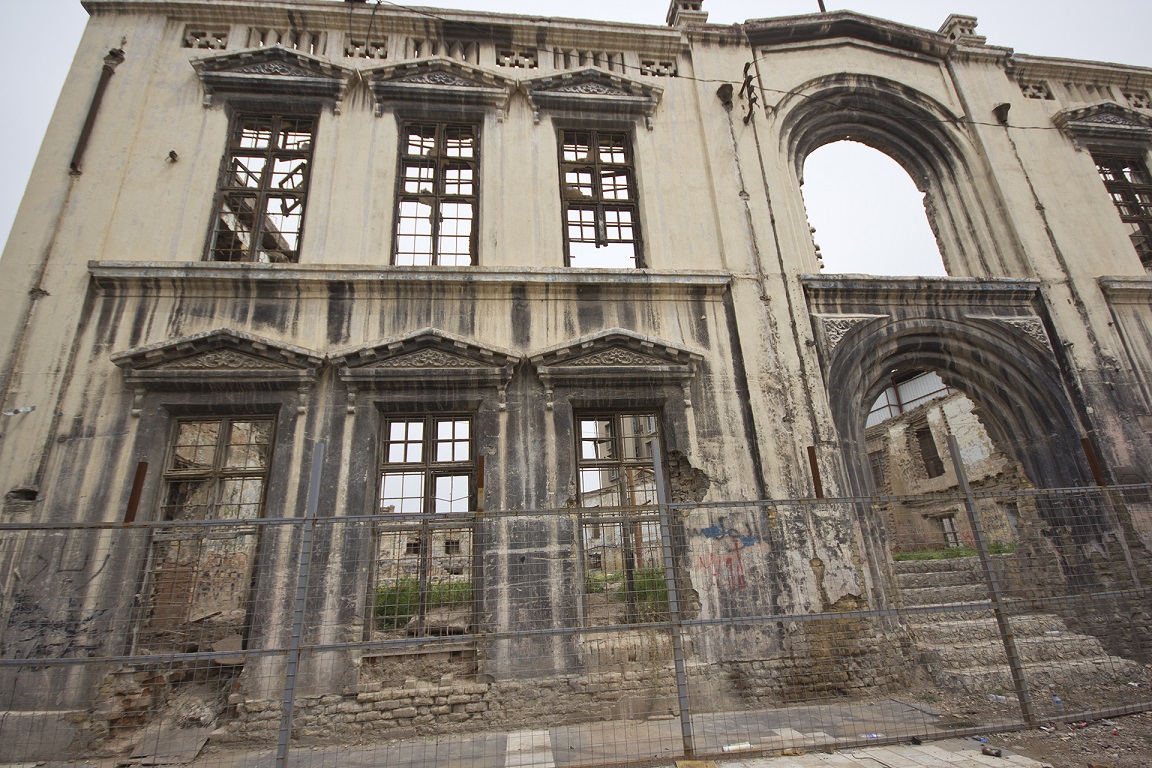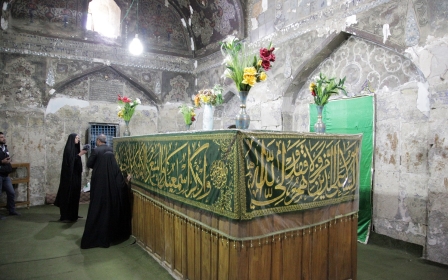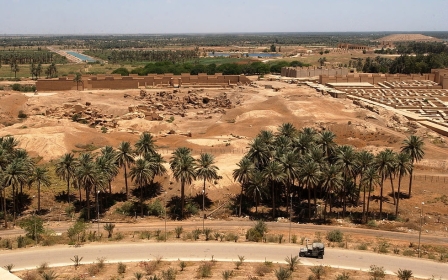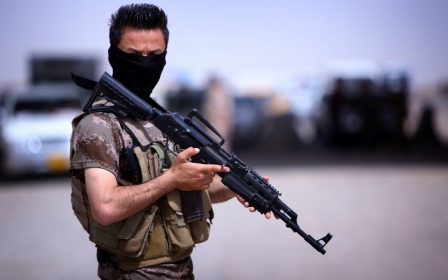Shrines, palaces, malls and red buses: A whistle-stop tour of Iraq

Word got out quickly: "The British ambassador and his wife are on the bus!"
The UK's ambassador to Iraq is known for his frequent trips around the country, but we couldn't possibly be mistaken for his entourage. For one thing, I was wearing a scruffy checked shirt and beaten-up old trainers.
We'd boarded one of Baghdad's London-style, red double-decker buses. Apart from my Boris Johnson-like messy hair, that was probably the most British thing about us.
The strange mix of alien and familiar as we climbed to the top deck was another weird moment on an intense seven-day run around southern and central Iraq with my wife Charlotte, who lives for travel but had never visited. This was an experiment: would she enjoy Iraq, and what's it like being a regular tourist here?
New MEE newsletter: Jerusalem Dispatch
Sign up to get the latest insights and analysis on Israel-Palestine, alongside Turkey Unpacked and other MEE newsletters
After four trips here as a security and political risk analyst, I was desperate to show Charlotte a country I'd fallen deeply in love with. Every time I returned, I'd struggle to put into words what I'd seen, like an enthusiastic "gap yah" student.
A key point: Iraq still gives visitors a sense of having a private viewing of some of the world's wonders, such as the 4,000-year-old ruins of Babylon, and the awe-inspiring Holy Shrines of Hussein and Ali with their intricate mirrored ceilings and breathtaking tile work.
A visitor can marvel at these sites without another Western tourist in sight. The few who do travel here describe often empty archaeological sites as "eerie," although thankfully more and more Iraqi families are again enjoying time out at these once popular destinations.
Iraq's cities buzz with the infectious energy of a people who've lived through almost non-stop crises since 1979 but somehow keep bouncing back with a wicked sense of humour.
On trips through the Iraqi countryside, it's not uncommon to see post-apocalyptic scenes. Driving up to Baghdad, we see a vast scrap metal yard stretching as far as the eye can see in an area once called "the triangle of death".
For a photographer, Iraq offers huge opportunities, some of which uncomfortably emerge from the crises and wars the country has been through. As Charlotte remarks, "there's quite an intense contrast between the beauty and the ramshackle."
Drive on for a few minutes and you'll find a rural idyll, a tumbledown villa nestled among date palm groves, shepherds with their flocks, and fields of yellow flowers.
In Baghdad, a restaurant's neon sign captured Iraq's undefeated spirit: "Nothing stops Baghdad."
Appropriate, because the streets and brightly lit malls were packed with late-night shoppers, who were obviously defiant. In February 2007, the Iraqi capital was hit with an average of three car bombs a day.
A new frontier?
I had not done much in the way of travel before Iraq, with the exception of a brief trip to Japan. It was some years after my first trip to the Iraqi marshes that I went further afield, travelling with my wife to Cambodia, Vietnam and Costa Rica.
Those trips came with some trepidation: would I fall in love with a new country that might somehow displace my passion for Iraq?
Iraq's unique charm still stands out. In Vietnam, I couldn't help but wonder what it might have been like to be one of the first Western travellers there at the start of the 1990s, the brief years between the aftermath of war and the hordes of tourists.
Iraq is still in that transition: it's possible to see the beauty of what older Iraqis describe from the 1960s and 1970s, albeit faded.
Despite these changing fortunes, this isn't the first time Iraq has enjoyed a quieter period since 2003, when the US invaded Iraq in what is known as the Second Persian Gulf war. The last time there was much less violence and improved security was in 2010, after the Islamic State (IS) group's predecessor, the Islamic State of Iraq, were routed. Then, as now, visitors have been slow to return.
MEE asked Geoff Hann, who runs Hinterland Travel (one of the few travel agencies that run tours across the south, since 2008) if perceptions were changing about the country.
"The popularity this year has grown immensely, I don't know why. Certainly, the Asian influence is here now, Chinese, Thai, Singapore. My British inquiries have gone down actually. The demise of ISIS has helped with overall interest. But I am about to take a tour of 14 people from all over the world."
Are people often nervous about going? "No, we don't get nervous people, otherwise they wouldn't come. We filter out most people, and if they are that worried, they should not come.
"On the whole, while some parts of Iraq are very bad, most parts of it are okay, and their security system is very tight, it works, and so, perception is changing."
Geoff's tours certainly look fantastic, with a 15-day tour covering pretty much everything you could hope to see in Iraq, coordinated with the Ministry of Culture and with a police escort. Our budget and time was a bit more limited, so our hosts for the trip was the Shia Endowment Office of the Imam Hussein Holy Shrine, which administers the Shia shrines of Iraq.
The holy shrines office will take visitors into these breathtaking places and are open to coordination with tourists. They will help you book hotels and arranged our transport for the trip, including airport runs.
All they ask is that you are respectful of the holy sites (my wife took a headscarf, but abayas (robes) are provided for entering the shrines, along with a guide). The cost of the trip, excluding flights but including transport, accommodation and food, was $850 per person for five days. We spent two days in Baghdad, staying with friends.
On balance, our guides and drivers earned every penny, driving us for hours on Iraq's treacherous roads.
Karbala and Najaf
Baghdad has Iraq's best hotels, such as the swanky Babylon Warwick - but they are not cheap. Because it's virtually impossible to turn down what I now jokingly call "hospitality extremism," a friend's house became our base for Baghdad.
In Karbala, we stayed at the Qaser al-Kadhimiya hotel, which has spacious rooms, good bathrooms with a decent shower and room service. Breakfast, lunch and dinner are provided, with a wide range of Iraqi fare that's better than a lot of restaurants in town. At $90 per night for a double room, this was reasonable.
My wife's first impression of Iraq was the airport security guards whose attitudes ranged from the internationally standard stony-faced, to highly amused when we said we were from London. But it was friendliness that set the tone for the trip, peaking later in the week as an entire college of kids from Babil added us on Facebook.
With our guide waiting, we were at the hotel in Karbala within the hour. I was pleasantly surprised to see our decent hotel room, having stayed during a previous trip in a grim, all-male office with a dormitory.
The next day, we met our guide Ali for the shrine, who took us to the entrance where Charlotte waited for an abaya before we entered the complex. Words fail to describe the shrine. I was so glad my wife could finally see this, and to see her face as she became speechless on viewing the vast interior and stunning sapphire blue Karbala tile-work.
Then it was back to the hotel for a brief lunch and off to the gargantuan 8th century desert fortress of Al-Ukhaidir, a 45-minute drive out of town.
"Rebuilt" on the orders of Saddam Hussein (to the horror of archaeologists), it is mind-boggling to think this fortress was once a vast, crumbling wreck amid a sea of desert.
But some parts of the original structure remain empty of visitors on our arrival, except for a small number of children whose laughter echoes through the cavernous halls. And within those halls and narrow corridors, a rush of history fills the senses as we creep around the same darkened rooms once explored by British colonial pioneer Gertrude Bell.
We then set off back towards Karbala, stopping at the once inhabited Neolithic caves of Al-Tar, strolling through a desert of greenery the colour of sea kale. On the way back, we stop off at Lake Razzaza, a dramatic, silvery slate grey expanse of water, but the track to the lake has become a quagmire. A rainy squall closes in and we turn back from the wilderness. Iraq's deserts are bleak and beautiful.
Babylon and Saddam's Palace
After the privilege of seeing the holy shrines in Karbala, we were driven to the ancient ruins of Babylon, near the modern city of Hillah.
The ruins of this city, thought to be the first "city" in the world, has a very good museum and excellent English-speaking guides to explain the many civilisations that have passed through this area, as well as the discovery of the world famous Ishtar Gate by German archaeologists in 1903.
"I just can't believe people are here, basically clambering on these relics," proclaims my wife at the ruins of Babylon, shortly after a furious groundsman screams at the Iraqi kids playing on the 3,000-year-old rubble.
Incredibly, despite Saddam's "restoration" of this site, many original walls are still visible, as if a giant had torn these vast chunks of rock asunder and scattered them across the land. On some sections, we see carvings of now-extinct aurochs (wild cattle) and mythical animals. On other walls, Saddam had his own name inscribed on the new brickwork.
Then we head up the hill for a quick lunch by a branch of the Euphrates before we go to Saddam's abandoned Babylon palace, as boats full of raving Iraqi men drift along the river to a backdrop of sound systems blasting Omar Souleyman-style techno.
It's by far the most haunting part of the trip. Now a popular spot for Iraqi families, the palace has been gutted of almost everything of value, but what remains is impressive: the Italian marble alone is estimated to cost over $20m and there is intricate woodwork on the ceilings.
It's easy to imagine Saddam's hard-partying sons here: 1980s kitsch at every turn, sipping Johnny Walker Blue Label, and enjoying spectacular sunsets over Babylon.
But it is also the house of a family who are now dead or in exile. The empty swimming pool and trashed servants quarters are chillingly strange places.
We then drive to the Mountain of Borsippa, a 2,000-year-old monument built by the Akkadians that provides stunning views of the lush green Babil province, and like Babylon, overlooks ancient ruins, as well as one of the supposed birthplaces of prophet Ibrahim.
As the sun sets, casting a pink glow over miles and miles of date palms, how much you can see in Iraq in such a short period feels overwhelming. And we've only scratched the surface on a quick seven-day visit.
That night, we catch up with friends in Karbala, who take us to the shopping district that Charlotte describes as being "like Ho Chi Minh city or Hanoi, you can just get everything here". Oil revenue has haphazardly propelled an explosive outbreak of capitalism.
Dreamlike
Seven days does not leave much time for breaks, and we're beginning to get tired, but the hair-raising car journey to Baghdad soon wakes us up, and before long we're having coffee in The Station co-working space.
It's here that I realise I was a little too ambitious with our schedule: a religious festival has closed some of the roads in the capital, meaning we won't have time to see Baghdad’s legendary National Museum.
But we are in for a surprise when we visit the reconstructed 13th-century Mustansiriya Madrasah, centre of the Arab world's scientific and cultural research during the Islamic Golden Age.
There, we are taken into the caverns beneath the building and see the burned bricks still in place, remnants from the Mongol sacking of Baghdad in 1258.
Then it's a short walk to see the famed Mutanabi street, the intellectual heart of Baghdad, with its legendary book market and the exquisite Shabandar cafe.
Shabandar, with its vintage-looking ceiling fans and walls adorned with faded photos of Baghdad's former glory, is one of the capital's oldest coffee shops. Like Cafe La Habana in Mexico City or Le Polidor in Paris, stepping into Shabandar is like entering another era, a dreamlike experience.
Along the way, we pass by the Ottoman era Old Governorate Building, its burned facade still standing after being looted during the chaos of the 2003 invasion. This is soon to be turned into a design centre, with the original facade in place.
We then stroll down Mutanabi's massive outdoor book market and out to the adjoining park, where Iraqis hear poetry recitals, admire local art and picnic near the picturesque Al-Qushla clock tower.
We attract a huge amount of attention. Given the tiny numbers of foreign tourists and the occasional foreign delegate, our presence here still feels very novel to Iraqis. It adds to the fun, particularly when we see a very typical tourist experience at a nearby cultural centre, involving dressing up as a Marsh Arab and posing in a mashoof fishing boat.
That night, we see the hyper-consumerist mega shopping malls of the capital, novel only because this is the first wave of mass consumerism Iraq has experienced and people are letting go in the kind of epic way Iraqis have mastered.
Over a huge dinner, our host jokes about his overeating. "When I think of my problems, I eat, and things get better."
I point to the massive plates of food, "so that is Daesh [IS], and that is [former] PM Maliki?" He roars with laughter, but in an instant, his face changes: "Daesh burned my family home, in Rawa, Anbar."
This was our last day in Iraq. The country was better than I had hoped, larger than life, passionate and at times overbearing in the best way possible. So what did Charlotte think?
"Iraq was the most interesting country I have visited, definitely. I would come again and would like to spend a lot more time in Baghdad. Iraq was a lot greener, a lot more scenic than I expected. The Iraqis are amazing. They have so many stories. It's sad, but expected, to see so many areas completely run down. I hope that side of things improve, for the Iraqis' sake."
On a final note, it's probably worth pointing out that while Iraq is a spectacular travel destination, parts of the country are still dangerous. You need to be more prepared than if travelling to many other countries. Speak to tour operators or check government travel advisory notices prior to travel.
Middle East Eye delivers independent and unrivalled coverage and analysis of the Middle East, North Africa and beyond. To learn more about republishing this content and the associated fees, please fill out this form. More about MEE can be found here.


